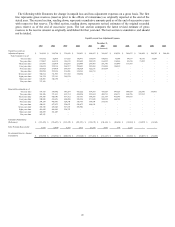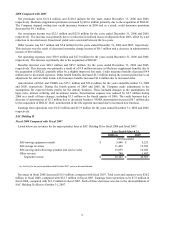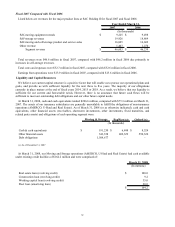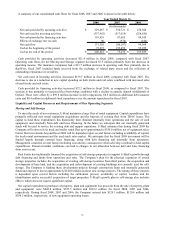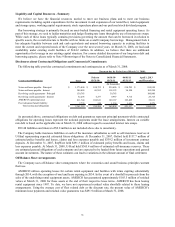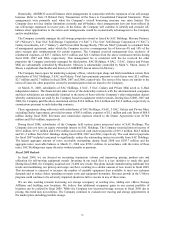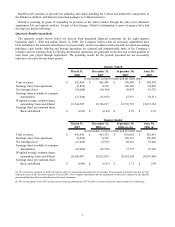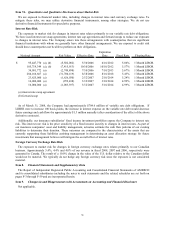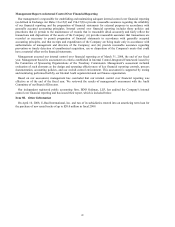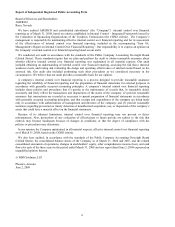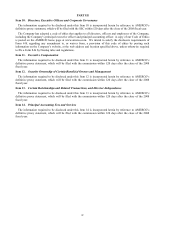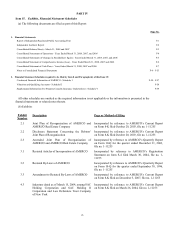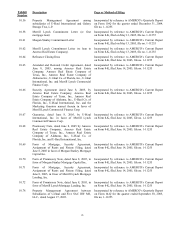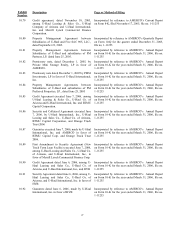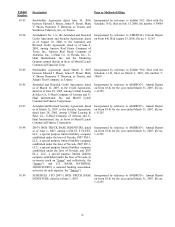U-Haul 2008 Annual Report Download - page 44
Download and view the complete annual report
Please find page 44 of the 2008 U-Haul annual report below. You can navigate through the pages in the report by either clicking on the pages listed below, or by using the keyword search tool below to find specific information within the annual report. 39
Item 9A.
Controls and Procedures
Attached as exhibits to this Form 10-K are certifications of the registrants’ Chief Executive Officer (“CEO”) and
Chief Accounting Officer (“CAO”), which are required in accordance with Rule 13a-14 of the Securities Exchange
Act of 1934, as amended (the “Exchange Act”). This "Controls and Procedures" section includes information
concerning the controls and controls evaluation referred to in the certifications.
Following this discussion is the report of BDO Seidman, LLP, our independent registered public accounting firm,
regarding its audit of AMERCO’ s internal control over financial reporting as set forth below in this section. This
section should be read in conjunction with the certifications and the BDO Seidman, LLP report for a more complete
understanding of the topics presented.
Evaluation of Disclosure Controls and Procedures
The Company’ s management, with the participation of the CEO and CAO, conducted an evaluation of the
effectiveness of the design and operation of the Company’ s "disclosure controls and procedures" (as such term is
defined in the Exchange Act Rules 13a-15(e) and 15d-15(e)) (“Disclosure Controls”) as of the end of the period
covered by this Form 10-K. Our Disclosure Controls are designed to reasonably assure that information required to
be disclosed in our reports filed under the Exchange Act, such as this Form 10-K, is recorded, processed,
summarized and reported within the time periods specified in the SEC's rules and forms. Our Disclosure Controls
are also designed to reasonably assure that such information is accumulated and communicated to our management,
including the CEO and CAO, as appropriate to allow timely decisions regarding required disclosure. Based upon the
controls evaluation, our CEO and CAO have concluded that as of the end of the period covered by this Form 10-K,
our Disclosure Controls were effective related to the above stated design purposes.
Inherent Limitations on Effectiveness of Controls
The Company's management, including the CEO and CAO, does not expect that our Disclosure Controls or our
internal control over financial reporting will prevent or detect all error and all fraud. A control system, no matter
how well designed and operated, can provide only reasonable, not absolute, assurance that the control system's
objectives will be met. The design of a control system must reflect the fact that there are resource constraints, and
the benefits of controls must be considered relative to their costs. Further, because of the inherent limitations in all
control systems, no evaluation of controls can provide absolute assurance that misstatements due to error or fraud
will not occur or that all control issues and instances of fraud, if any, within the Company have been detected. These
inherent limitations include the realities that judgments in decision-making can be faulty and that breakdowns can
occur because of simple error or mistake. Controls can also be circumvented by the individual acts of some persons,
by collusion of two or more people, or by management override of the controls. The design of any system of
controls is based in part on certain assumptions about the likelihood of future events, and there can be no assurance
that any design will succeed in achieving its stated goals under all potential future conditions. Projections of any
evaluation of controls effectiveness to future periods are subject to risks. Over time, controls may become
inadequate because of changes in conditions or deterioration in the degree of compliance with policies or
procedures.
Changes in Internal Control over Financial Reporting
There have not been any changes in the Company’ s internal control over financial reporting (as such term is
defined in Rules 13a-15(f) and 15d-15(f) under the Exchange Act) during the most recent fiscal quarter that have
materially affected, or are reasonably likely to materially affect, the Company’ s internal control over financial
reporting.


